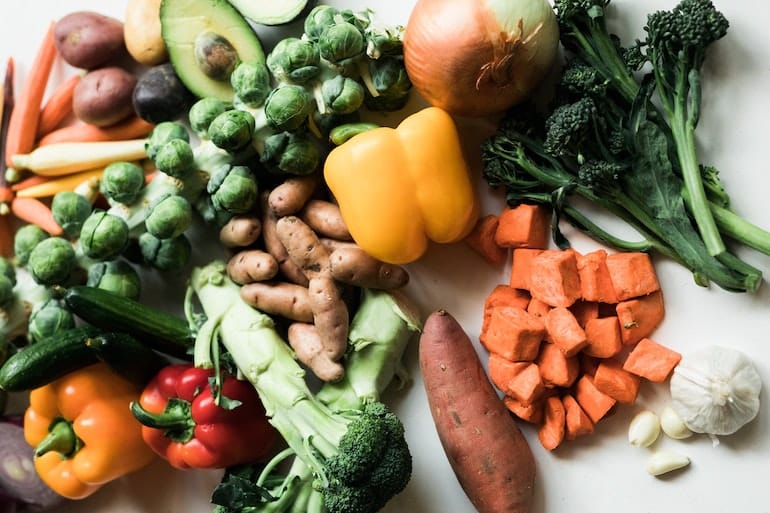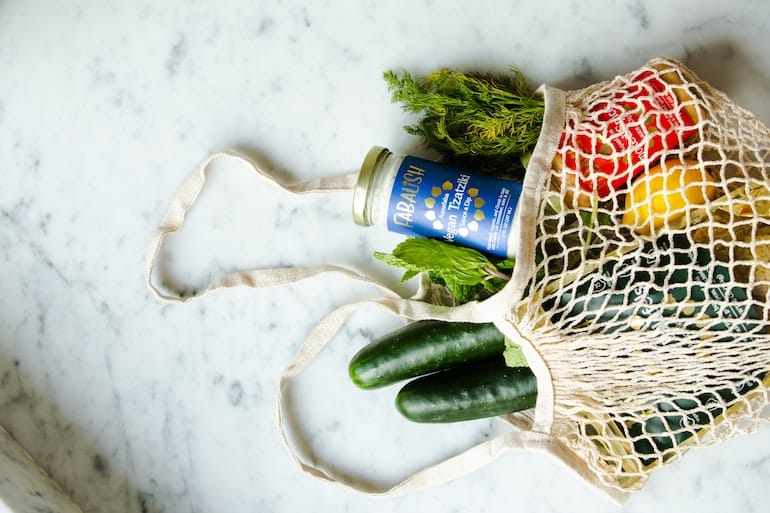Food prices have increased dramatically over the past year. In fact, the United States Department of Agriculture estimates that food sticker prices are up 13 percent since September 2021. With inflation at an all-time high and discussions of a recession looming, it can be especially stressful to food shop when trying to eat healthily. Your go-to food choices may no longer be in your budget and low-cost but highly-processed foods may seem like your only option.
Fear not! You can still prioritize eating healthy on a budget. The key is to be a strategic shopper. While grocery shopping on a budget may take more time and effort (we see you clipping coupons!), the payoff will be worth it for your energy levels, digestion, and long-term health.
Let’s also remember that your health is more than just your physical health, but your mental and emotional health too. If you’re constantly stressed about an over-budget grocery bill, your overall health will suffer. To help, I put together my favorite tips for saving money on groceries, below.
HOW TO EAT HEALTHY ON A BUDGET

1. PLAN FOR 1-2 VEGAN MEALS PER WEEK
Did you know that adding just a couple of plant-based meals per week can be one of the best tips for saving money on groceries?
Reports suggest that meat, fish, and poultry prices increased by nine percent over the last year. However, you can purchase dry beans for just $0.13 per serving. Plant-based protein options tend to be less costly than their meat alternatives, making them a great choice when you’re trying to save money and eat healthy on a budget.
Plant-based proteins, such as beans and lentils, also pack tons of nutrients into your diet. Not only are they a good source of protein, but they’re rich in fiber, iron, and potassium.
Need some ideas? Try this Sweet Potato Black Bean Enchilada Recipe for a less expensive Mexican-themed night, make a big pot of meatless chili, or try your hand at making veggie burgers.
2. STRETCH MEAT-CENTRIC MEALS BY ADDING MORE PLANTS
If you’re used to “meat and potatoes” style meals, adding more vegan meals to your diet may be out of your comfort zone right now. But you can still stretch your meat-heavy meals by filling out your plate with more (affordable) veggies. Check out the examples for some staple dinners below:
- Chicken Stir Fry: Add frozen shelled edamame (about $0.75 per serving) in addition to chicken and vegetables for more plant-based protein and fiber.
- Chili: Don’t just use ground beef, but also add canned beans ($0.48 per serving).
- Pasta and Meatballs: Mix in chopped mushrooms ($0.27 per serving) in addition to ground meat.
- Chicken Noodle Soup: Add chickpeas ($0.48 per serving), like in this recipe.
These methods will help you get more servings out of your usual recipes while adding in additional nutrients. Plus, they all make excellent leftovers!
3. JOIN A CSA
Community-Supported Agriculture, or CSA, is a farming model designed to support farmers and consumers alike. Consumers purchase a share of a farm’s harvest without knowing exactly what they will receive each week. Most CSAs have a weekly or bi-monthly pickup where consumers will receive a pre-determined amount of vegetables and/or fruit for a set membership fee. Joining a CSA is an affordable way to buy vegetables and fruit while supporting your local farmers (who are also feeling the pressure of inflation).
If you love to be creative in the kitchen, a CSA is also a great way to expand your cooking muscles, because you’ll receive vegetables that you may not have bought yourself at the supermarket. Luckily, the crops you get are in season and at their peak ripeness, so you know you’re getting the best of your local produce. Bonus: Produce also contains the highest amount of nutrients right after its picked.
You can find a local CSA here.
4. SHOP BULK BINS
One of the most affordable places to shop in any supermarket is often overlooked. The bulk bins often give you the best price for grains, dried beans, lentils, dried fruit, coffee, spices, and even chocolate because supermarkets are able to purchase these items in large quantities, passing on a discount to you. In fact, one study found that bulk bins can save you a whopping 56 percent compared to buying the same food in a package. Even more, you help the environment by cutting down on packaging. (Psst: You can even bring your own jars!)
However, it’s always important to be a comparison shopper. This same study found that nuts, especially almonds, can be more expensive in bulk bins compared to individual packages. Check your local supermarket, as prices can vary based on where you live.
5. RELY ON FROZEN PRODUCE
Fresh vegetables and fruit can be costly—especially in the winter when they’re out of season. If you’re trying to eat healthy on a budget, frozen is the way to go.
It’s a common misconception that frozen food is not as healthy as fresh. But the truth is most fresh produce travels thousands of miles to hit your supermarket shelves. This transportation time leads to a loss of nutrients. As a result, frozen fruits and vegetables can actually retain more nutrients than their fresh counterparts. Thanks to current freezing methods, frozen produce is picked and frozen at its peak ripeness, locking in more nutrients.
As an added bonus, frozen produce often cuts down on preparation time. Instead of chopping and dicing, you can cook directly from (or even in) the bag.
6. DON’T SKIP THE CENTER AISLES OF YOUR SUPERMARKET

Outdated healthy eating advice states: “Shop the perimeter of your supermarket.” However, we now know that this couldn’t be further from the truth. While it’s true that the center aisles contain more packaged food items, there are still plenty of healthy items to be found.
For instance, did you know that canned tomatoes contain more antioxidants than fresh tomatoes? Especially in the fall and winter, you’ll save a pretty penny by relying on canned tomatoes for your pasta sauces, chili, soups, stews, and more.
Canned beans are also an affordable option. Most canneries did away with BPA and other chemical liners years ago, so you can rest assured that the canning process is a healthy one. If you’re still concerned about added sodium, rinse the canned beans to remove up to 40 percent of the sodium content. Or, look for “no salt added” varieties.
7. HIT THE BAKERY AT THE END OF THE DAY
If you’re looking to save money on baked goods, shop at the bakery at the end of the day. Bakeries often discard (or donate) their leftover goods at the end of the day, which is why you can often score a deal then.
When buying bread, look for 100 percent whole wheat bread for more fiber and nutrients.
8. DON’T SHOP ON A WHIM
One of the worst things you can do when food shopping on a budget is to walk into a store blindly. Without doing your research in advance, you’re almost guaranteed to spend more money or purchase items that end up in the trash at the end of the week.
Instead, be sure to do these three things before your next shopping trip:
- Look up the sales in advance
- Make a meal plan for the week
- Write a detailed shopping list
By looking up sales at multiple stores, you can find the best available price for your favorite foods and save money on big-ticket items, like proteins and produce. Find out when your local stores start sales (for most stores it’s Wednesday). Shop on the day sales begin to ensure the items you want on sale are in stock. Then, craft your meal plan around the sales. Next, write a detailed shopping list and stick to it. While berries may look appealing to add to your yogurt in the morning, if they’re not on your list, they may not fit your budget. (But maybe a bag of frozen ones will!)




